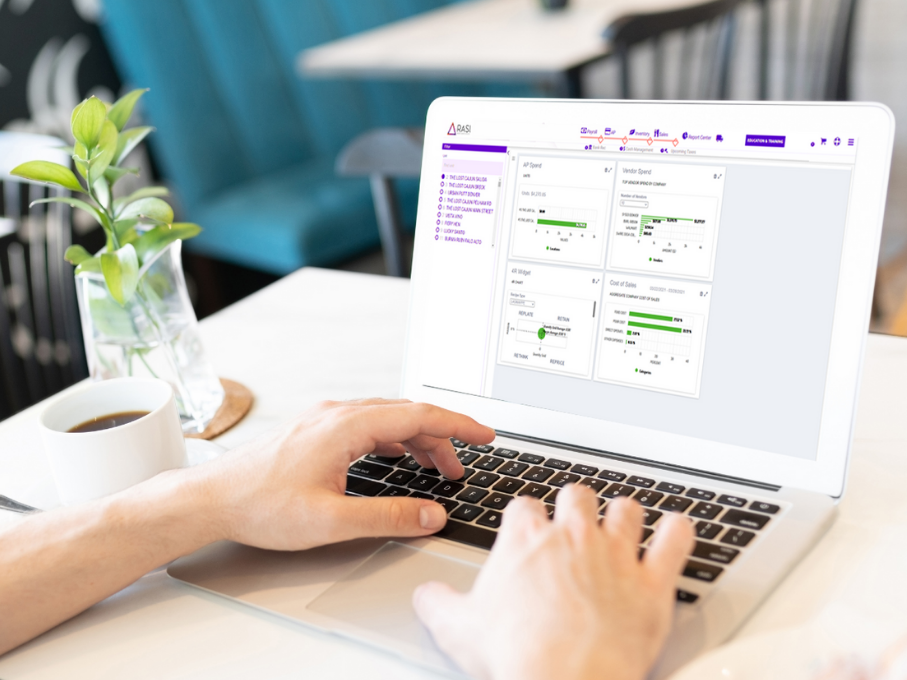Today, innovative restaurants are using business intelligence to drive operational efficiencies, improve profitability, and reduce managerial burdens. How do they do it?
The clearest way to understand restaurant business intelligence is to run through example metrics used by experienced operators. Note that in order to use business intelligence in your restaurant, you need to be running modern restaurant management software that collects, tracks, and reports on relevant metrics.
How Restaurants Use Business Intelligence Systems
There’s no one way to use business intelligence. Restaurants are free to choose what to track, how to track it, and what actions to take based on the data.
That said, there is some consistency in terms of the metrics most operators choose to focus on. We’ll introduce a selection of basic and advanced business intelligence reports for restaurants that offer known value. Each of the following metrics is both a lens to view your business in a different light, and to mix metaphors, a lever to push to optimize outcomes.

Examples of basic business intelligence for restaurants
- Sales trends: What dishes are selling better or worse? Is customer taste evolving in a way you can capitalize on?
- Average ticket size: POS data should make it easy to track your average ticket size—the amount a typical customer spends over the course of a meal.
- Table turnover: How often do your tables turn during an average night. You can likely find this in your POS data.
- Staffing levels: On busy nights, how many staff are working the front-of-house? How about on average and quiet nights? Do your staffing levels match sales levels or are they expensively out of alignment?
- Workforce Intelligence: Manage labor, training dollars, and employee turnover across multiple units.
Examples of advanced business intelligence metrics
- Contributing margins for menu items: You want to know how profitable each menu item is. Calculated as the sale price less the food cost.
- Payroll compliance data: Track tips, overtime, and state and federal payroll requirements
- Spending Forecasting: Evaluate and optimize daily restaurant spending with a weekly spend forecast.
- Actual vs Theoretical Cost Variance: Once you know your theoretical food costs, compare them to your actual costs and track the difference between the two.
- Supplier Intelligence: Easily track product price trending, manufacture deviations and contract compliance.
WATCH THE FULL VIDEO BELOW!
How does Software Improve Business Intelligence?
Modern restaurant management software, such as RASI’s suite, offers detailed analytics tracking and reporting features. A good solution will integrate with your POS system to pull data directly from the source, ensuring timeliness, accuracy, and a minimum of manual processing.
To get the most out of business intelligence metrics, it’s critical that you have automated processes in place to regularly and consistently collect the needed data and then track and chart the data in an easy-to-understand manner. Customizable dashboards, in which you can define the tracked variables and how they are graphed, are key tools. RASI’s system allows you to keep on top of your metrics in real-time, enabling swift operational decisions.
How can Business Intelligence help restaurant profitability?
From the front of the house to the back of the house, business intelligence has practical benefits that influence the bottom line.
For instance, data-based sales forecasts can help you determine the ideal number of shifts to schedule to meet demand, and thereby deliver good customer experiences at a minimum labor cost.
When it comes to your menu, dish-by-dish sales data will provide you with the information you need to adjust the menu, rework dishes that don’t sell, and double down on popular choices. This is known as menu engineering, and it’s a key practice of profitable restaurants.
Cost management features like supplier intelligence, let you compare your costs with those of the industry as a whole. You can also measure product price trends, manufacturer deviations, and contract compliance, to ensure that you’re getting a good deal at all times.
Another benefit of business intelligence is the opportunity to control costs with greater precision. Closely monitored data on COGS, when combined with measurement of portions and tracking of kitchen waste, will position you to know exactly how much product you use to produce your dishes. Using that information, you can optimize your inventory so that you have adequate reserves for your sales volume but minimize time-on-shelf and hence spoilage.
On the whole, business intelligence is a force multiplier for management, setting you up to make timely, data-based operational decisions that generate a financial return. RASI enables you to track your key performance indicators (KPIs) in real-time so you understand where your business is today, not last month.

Selecting software to get the most out of your restaurant analytics
We’ve explored the benefits of business intelligence for restaurants. Now the question is, how do you get started with restaurant business intelligence? The best way is with software built from the ground up for the restaurant industry.
RASI provides comprehensive analytics and reporting solution for restaurants that integrates POS data, accounting, payroll, cash management, and operational metrics, minimizing manual data entry and giving you consolidated, unified access for all your restaurant data. RASI’s purpose-built restaurant software is the choice of thousands of restaurant operators across the country.
LISTEN TO THE FULL PODCAST EPISODE BELOW!
Schedule a free demo to see how RASI can enhance profits at your restaurant!









